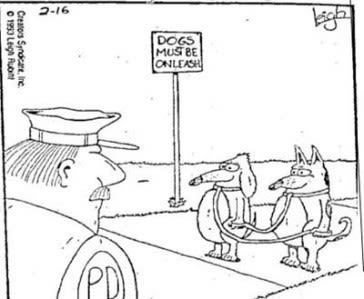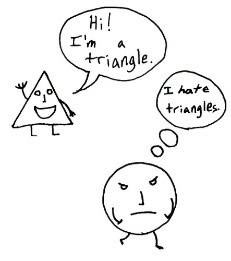Discrimination by 'Lookism'
Also known as 'Aesthetic Labour'
Experiential Education

Biased Decision-Making in Staff Selection
Imagine if you went for a job and you were rejected because of the way you looked … how would you feel? I’m not talking about turning up to an interview dishevelled or dirty, or inappropriately dressed. I’m talking about hiring staff judging you by, or hiring you because of, your body type (height, weight, and so on), your hair style, your facial features, your colour, your apparent physical dis/ability, your body art, your ethnic or religious apparel.
Lookism (also known as aesthetic labour) in its broad concept is practising discriminatory treatment towards physically unattractive people. This can happen in social situations, but it can and does occur in the workplace, especially when hiring staff based on the way they look (or more particularly, because of the way they look) rather than on their capability of fulfilling the position for which they are applying. It is biased decision-making around staff selection. And it is often based on stereotypes. This is one of several forms of discrimination. See below what the Victorian Equal Opportunity and Human Rights Commission (2017) says about discrimination.
Discrimination is treating, or proposing to treat, someone unfavourably because of a personal characteristic protected by the law. This includes bullying someone because of a protected characteristic. The Equal Opportunity Act 2010 – Victoria's anti discrimination law – protects people from discrimination and harassment in areas of public life such as workplaces, schools, clubs, shops or places that provide services... You can be discriminated against directly or indirectly. In Victoria it is against the law for someone to discriminate against you because of a personal characteristic that you have, or someone assumes that you have. These personal characteristics are things like age, race, disability, physical features and political beliefs.
See the Victorian Equal Opportunity and Rights Commission Website for more information.
The Body in the Workplace.
The way we look is important: it is what we present to the world, including as employees in the workplace or as members of a team. As leaders we need to be aware of our own body and how others perceive us, and be aware of what the bodies of those whom we lead are telling us (known as ‘embodied leadership’). As employers, we need to be careful not to use our perceptions of body as the basis for employing someone (‘lookism’).
Embodied Leadership
Australian academic Amanda Sinclair raises the concept of embodied leadership. She makes the point that we all bring our bodies to work and that our size, race, gender, sexual orientation and so forth may affect our leadership capacity. ‘Bodies are not irrelevant in the construction of leadership’s influence and effectiveness’, she suggests (2007, p. 92). As leaders, we can use this awareness for the good of the people whom we lead. For example, Christine Nixon, former and first female chief commissioner of police in Victoria and Australia, realised that police officers came in many different body sizes and shapes, yet the uniform was a ‘one size fits some’ style. She insisted that each police officer’s uniform (including her own) was correctly fitted, comfortable, yet smart. For more on this aspect of the body in the workplace, see the module entitled ‘Non-Verbal Communication: Body Language'.

'Lookism' or 'Aesthetic Labour'
Sinclair (2011, p. 120) refers to ‘lookism’, or ‘aesthetic labour’, and suggests that employers can (and often do) discriminate against potential employees because of the way they look – by trying to ensure that the employee fits their idea of what their employee should or shouldn’t look like. An example could possibly be found in the world of modelling.
The emergence of lookism has been seen by some as a reaction to changes in the commercial market-place. For example, Warhurst, van den Broek, Hall and Nickson (2009, p. 132) suggest that ‘the issue of employee looks has become prominent as services have expanded and competition increased, with companies trying to differentiate their service offerings’. ‘Aesthetic labour’, they suggest, seeks to . . . shape employees’ corporeality, and for . . . commercial gain’.
What can we do to avoid being guilty of lookism?
- Here are some ideas:
- Maintain an awareness of it
- Avoid stereotyping
- Avoid prejudice
- Don’t judge on first appearances - learn the full story (see a YouTube video below)
- Practise cognitive empathy-based ethics (see the module 'Ethics')
- Know the laws (see below)

Creators Syndicate 1993
Creators Syndicate 1993
A question: are there times when not hiring someone because of their physical appearance might not be practising lookism?
As with most concepts, this one is not black and white.
What about if you are advertising for a guide to work along the edge of the Grand Canyon and an applicant is blind? What about a job as a diet consultant and the applicant is over-weight? Or as an aerobics instructor, and the applicant cannot walk? In these situations, an awareness of the laws is necessary. Here is the link to the website of a guide to Australian discrimination laws:
Australian Human Rights Commission’s ‘A quick guide to Australian discrimination laws’
State and Federal Laws
Laws exist at both federal and State level, including for exemptions. Here is an extract:
Commonwealth laws and the state/territory laws generally overlap and prohibit the same type of discrimination. As both state/territory laws and Commonwealth laws apply, you must comply with both. Unfortunately, the laws apply in slightly different ways and there are some gaps in the protection that is offered between different states and territories and at a Commonwealth level. To work out your obligations you will need to check the Commonwealth legislation and the state or territory legislation in each state in which you operate. You will also need to check the exemptions and exceptions in both the Commonwealth and state/territory legislation as an exemption or exception under one Act will not mean you are exempt under the other.

Learn the Full Story
As mentioned above, one way to avoid ‘lookism’ is to not judge by appearances, but to learn the full story. Here is a link to a YouTube video (Guardian 2007) which helps illustrate this idea:
The Guardian Commercial - Points of View | 0:27
Activity
To consolidate what you've learned from this module, complete the engagement activity on Discrimination by Lookism in PebblePad. This will be saved into your Asset store. You can then move it into your Professional Portfolio.

You can add your answers to the above questions into your your Professional Portfolio in PebblePad
References
Australian Human Rights Commission 2017, ‘A quick guide to Australian discrimination laws’, viewed 11 May 2017, <http://www.humanrights.gov.au/employers/good-practice-good-business-factsheets/quick-guide-australian-discrimination-laws
>.
The Guardian 2007, ‘The Guardian Commercial – Points of View’, YouTube, 29 October, viewed 12 May 2017, <https://www.youtube.com/watch?v=E3h-T3KQNxU
>.
Sinclair, A 2007, Leadership for the disillusioned: moving beyond myths and heroes to leading that liberates, Allen & Unwin, Sydney.
Victorian Equal Opportunity & Human Rights Commission 2017, ‘Discrimination’, viewed 11 May 2017, <https://www.humanrightscommission.vic.gov.au/discrimination
>.
Warhurst, C, van den Broek, D, Hall, R & Nickson, D 2009, ‘Lookism: the new frontier of employment discrimination?’, Journal of Industrial Relations, vol. 51, pp. 131-36.

